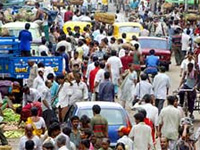
Thiruvanathapuram, August 10: Kerala is heading for a significant phase in its demographic transition with the state moving towards achieving zero population growth rate, which will result in an increase in scarcity of labour.
With a very low fertility rate and stabilising death rate, Kerala is expected to achieve zero population growth rate in 25 to 30 years, a stage indicating the incipient decline of the population, according to the State Urbanisation Report.
"Kerala is already experiencing negative population growth and with birth and death rate remaining at the same level, the state's population growth will reach zero level", Population Expert at the Centre for Development Studies, S Irudaya Rajan, told PTI here.The very low natural increase in population, low fertility rate, stablized death rate all leads to the third stage of demographic transition in Kerala -- zero population growth rate, he said.
There would be more old people, leading to health related problems. Also, there would be shortage of labour.
The report, prepared by the Department of Town and Country Planning, found that migration from the state and decline in fertility is a cause for low population growth.Interestingly there were regional variations in population growth. There was also a spatial shift in the region of high population growth rate in the last five decades.
While in the 1950s, the southern districts showed high population growth, at present the growth rate is in central and northern districts, the report said.
Presently Kerala's population is 3.34 crore, constituting about 2.7 per cent of the total population of India.The annual population growth rate is 0.5 per cent, lowest in the country. Kerala has a high population density with 859 persons per square kilometer.Historically Kerala has experienced a very low population growth rate compared to the national population growth rate.
Kerala has been considered an 'out-migration' state right from 1930.As per a study of city based Centre for Developmemnt Studies 22.8 lakh people from the state were living abroad in 2011 while the number of migrants living in other states is estimated at 9.31 lakh.
The report said Kerala, which already depends on workers from other states, especially West Bengal, Odisha and the North East for construction activities, would also face labour shortage in agriculture and related activities in future.
Kerala now has around three million immigrant labourers, mainly in the construction sector and other allied activities.
On population features in urban areas, the report said growth rate of urban population has always been higher than that of the total population, indicating the high pace of urbanisation experienced in Kerala.
"The state has undergone highest level of urbanisation in its history with a percentage increase of 83.82 during 2001-2011 over the previous decade," it said.
As per the present urbanisation pattern, environmentally sensitive high land is spared, but fetile agriculture land in the midlands is being converted for commercial and residential purposes, the report said.





Comments
Add new comment